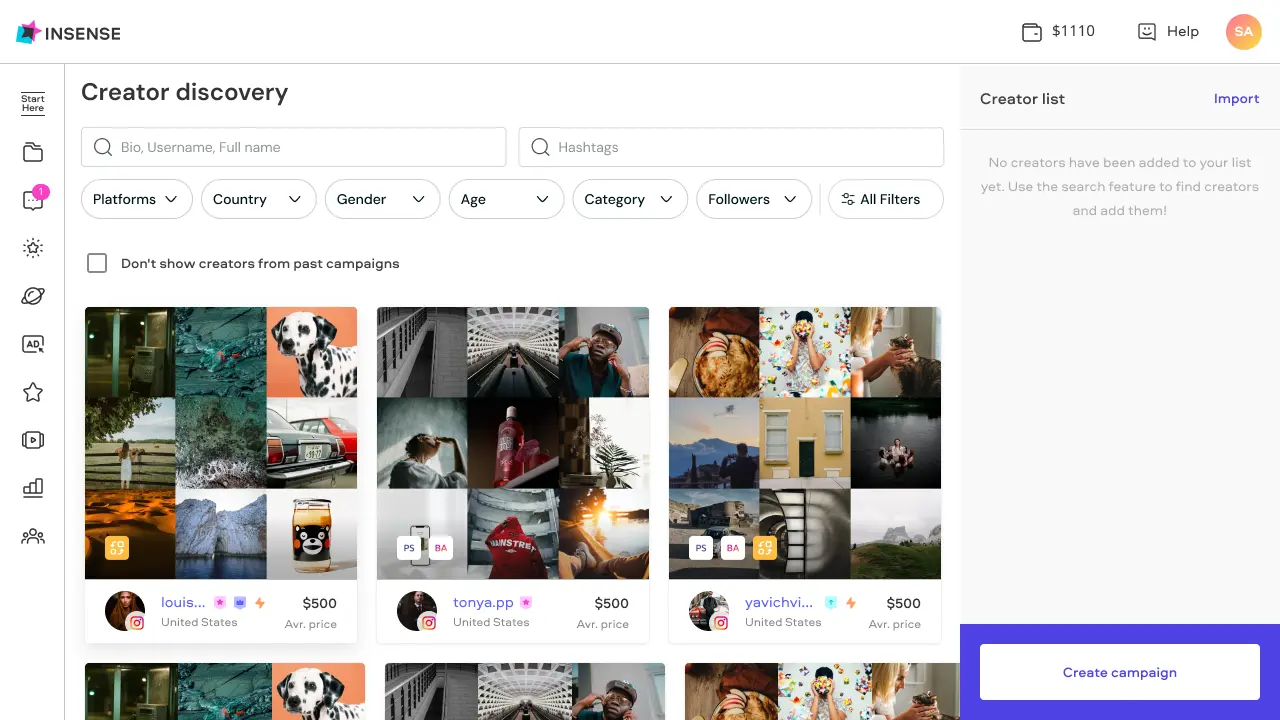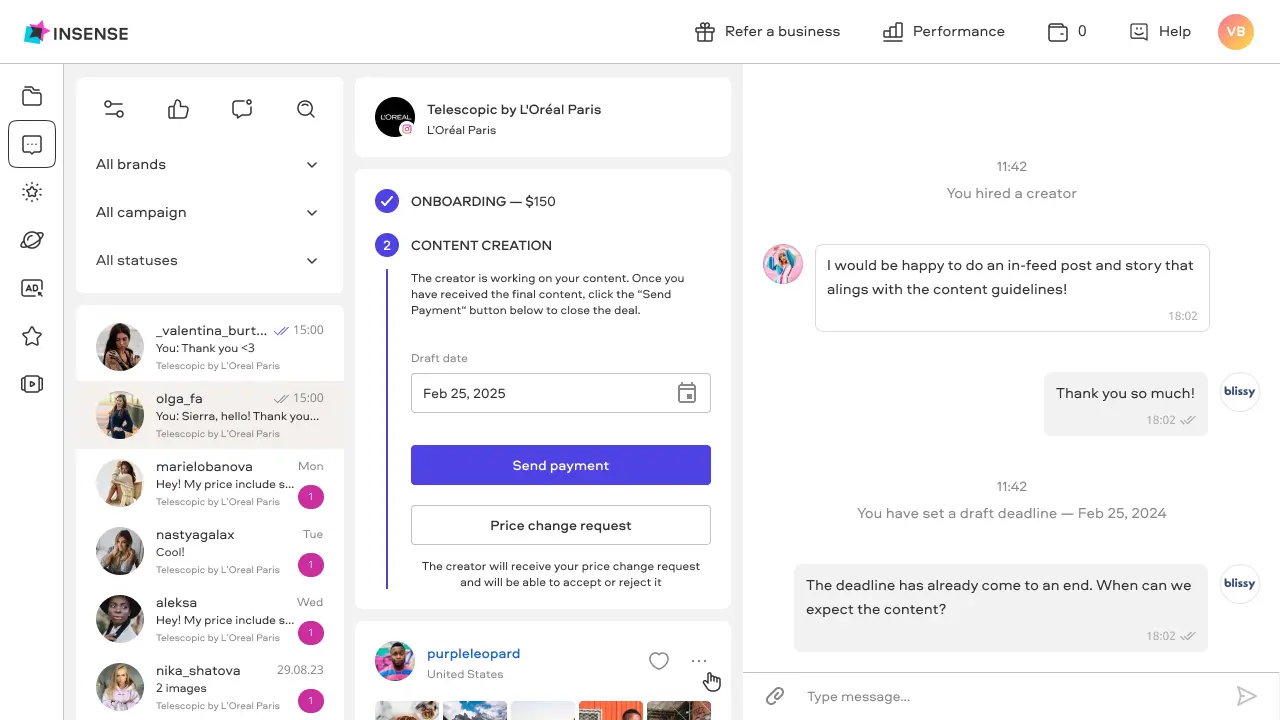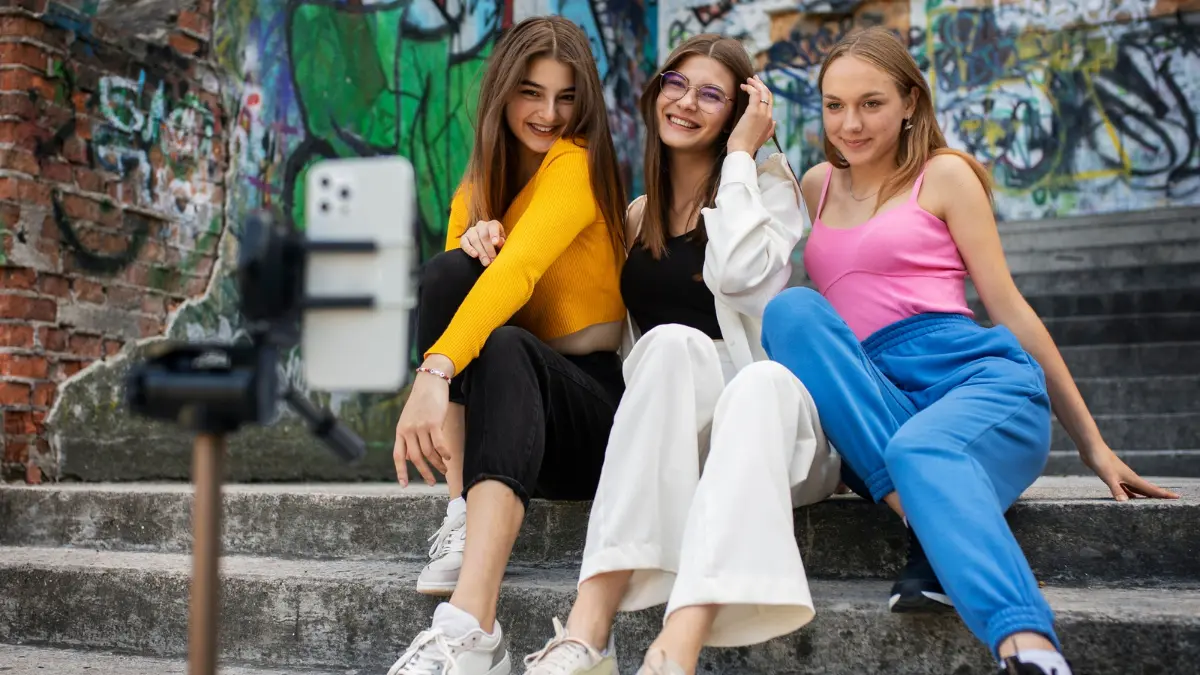Looking to expand your Instagram reach through brand ambassadorship programs?
We’ve got you!
This guide is to show you how you can find and collaborate with brand ambassadors on Instagram.
As you read, you’ll find out:
- The qualities and importance of brand ambassadors.
- Where and how to find the top brand ambassadors on social media platforms, particularly Instagram.
- How to reach out and form brand partnerships.
- How to measure and track the progress of your ambassadorship campaign.
Let’s get right in.
1. Define Your Brand Ambassador Criteria
A brand ambassador is a representative of your brand.
It’s a person who supports, represents, and advertises your brand in a positive light, both offline and online.
In simple terms, think of a brand ambassador as a personal cheerleader for your brand.
They’re the type of people you’d meet at a store and ask their opinion about a product or service they've previously used.
Their purpose? To increase brand awareness and drive sales for your brand.
But does this actually work? Oh yes it does!
According to statistics, 77% of individuals believe brand recommendations from people they know.
This simply means that people will trust a ‘stranger’s’ recommendation (if they follow that ‘stranger’ online) more than a sponsored post or traditional advertisement.
But finding a brand ambassador isn’t just picking the first person you see when you hit the search button on Instagram.
It’s a more careful approach, which means that as a business owner you may have to choose people who represent a particular:
- Age range.
- Gender.
- Location.
- Set of interests.
- Other demographic factor aligned with your brand.
However, you must first define your brand identity before seeking a brand ambassador who matches your requirements.
For an ambassador to act as a representative of your brand, they must embody your brand’s values and goals as this will help you create a better brand image for your target audience.
For instance, if you’re a fitness apparel brand, it wouldn't be ideal to endorse makeup enthusiasts as your brand partners.
Doing this may create confusion among your audience concerning your brand’s products and image.
For this reason, it’s always better to recognize and understand your ambassadorship goals before choosing your ambassadors.
So how do you go about setting goals?
Setting your goals
When setting your goals, consider the following questions:
- What type of content format do you want to create? Are you going for photos, long-form videos and stories, or would you prefer engaging Reels and short and sweet unboxing videos?
- What’s the goal of your marketing collab? Do you want to increase sales, drive engagement rate, and increase brand awareness, or are you looking to spread the word about your new products?
- What type of brand ambassador do you want to work with? An affiliate ambassador whom you could pay with incentives and free products, an employee ambassador, or a customer ambassador?
- What’s your content tone? Are you going for informative, educational, or entertaining, to mention a few?
Answering these questions will help you get started with setting your goals.
Now let’s find out how you can identify potential Instagram ambassadors with a reasonable social media following.
2. Research & Identify Potential Instagram Ambassadors
There are various means you can use to find potential Instagram ambassadors to run successful brand ambassador programs. Using an influencer marketing platform is one of them.
An influencer marketing platform is an online space where you can go to find brand ambassadors and manage your brand collaborations.
One such platform is Insense.
.webp)
Insense provides a wide range of features that business owners can use to optimize brand collaborations.
Top of the list of these features is the Creator Marketplace, which comes with a search filter tool that automatically filters your search according to age, category, gender, location, platform, and so on.
Additionally, you can:
- Assess the ratings, number of followers, portfolios, and even track previous records of multiple ambassadors and content creators.
- Find brand ambassadors who fit your budget.
- Seamlessly chat and communicate with potential brand partners by extending invitations and requesting them to collaborate with you directly on the Insense platform.

- Use branded hashtags and niche hashtags
Branded hashtags are customized hashtags used to identify a specific service or product.
They could be the name of the product/service, the name of the campaign, or the slogan.
Examples include #dior, #weworewhat, and #fijiwater.
Niche hashtags, however, are those that contain certain keywords that are specific to a particular industry.
For instance: #foodambassador, #makeupinfluencer, and #fitnessinfluencer.
To use these hashtags, all you need to do is enter the hashtag in the search tool of your social media accounts and press enter.
Alternatively, you can choose to look for brand ambassadors by checking your competitors’ hashtags to find out who they previously or recently collaborated with.
Note that when looking for ambassadors using hashtags, it’s usually best to look for micro-influencers.
Here’s why.
Micro-influencers vs. Macro-influencers
Micro-influencers typically have a smaller and more engaged following, usually between 10,000 and 100,000 on Instagram accounts or other social media accounts.
Their following, though small, generates more engagement than macro-influencers.
Some of the perks of working with micro-influencers, besides the highly engaged audiences and strong niche market, include:
- Micro-influencers have a higher conversion rate in comparison to macro-influencers.
- They're cost-effective.
Below is an average of how much an influencer would charge per Instagram post.
These prices are in accordance with a survey by HypeAuditor 2022.
- Nano-influencers (1K – 5K followers): $10 – $50.
- Micro-influencers (5K – 20K): $15 – $110.
- Mid-tier influencers (20K – 100K): $35 – $350.
- Macro-influencers (100K – 1M): $185 – $2,500.
- Mega-influencers (>1M): average min. $1,200.
Now you know their prices and how to find them. Let’s go a bit further and discuss how you can approach potential brand ambassadors.
3. Approach Potential Brand Ambassadors
The best way to approach potential brand ambassadors is by sending them direct messages; effective and personalized outreach messages to initiate conversations.
To write a personalized message, consider doing this:
- Let the ambassadors know why you feel they’re a good fit for your brand.
- Talk about the benefits you have for them. This can include bonuses, incentives, gifts, sponsorships, payments, etc.
- Discuss the structure and strategy of your campaign. Will they be given discount codes, will they be required to run giveaways, referral marketing campaigns, etc.
- Ask them if they've any questions about your brand or the ambassadorship program.
Alternatively, you can use an influencer marketing platform to interact with multiple brand ambassadors in one place.

With Insense, you can:
- Communicate directly with successful brand ambassadors to negotiate pricing, provide feedback, and get all your content delivered.
- Manage your conversations by sorting chats based on delivery status, read or unread messages, and favorite creators.
- Save all information in one place.
- Receive email notifications when a creator sends you updates about your campaign or results.
All these benefits can ultimately help you form genuine relationships and connections with brand ambassadors.
Create a connection with brand ambassadors
It's essential to create connections with your ambassadors because the working relationship you create with them will shape the perception they give people about your brand, and the amount of high-quality content they generate for you.
One way to create a connection is by involving and enhancing their personal brand by engaging with their content, leaving thoughtful comments, and showing interest in their work.
In other words, be their Instagram follower and show them your appreciation online.
4. Negotiate Terms & Agreements
The aim of negotiations is for you to get the best possible deal for your brand, while still maintaining transparency and fairness with the brand ambassador.
You can initiate the negotiation process by discussing mutual expectations and getting an understanding of their preferences.
Some things to negotiate might include:
- Compensation.
- Campaign duration.
- Content schedule.
- Content usage rights.
- Exclusivity rights.
These legal rights are some of the most important things to discuss, as Instagram and other social media platforms are governed by certain legal and disclosure rules and regulations.
Legal & disclosure guidelines
Keep in mind that the FTC (Federal Trade Commission), an independent agency of the United States government, enforces laws that protect consumers, in this case Instagram users, from deceptive advertising.
For potential brand ambassadors or social media influencers, there are disclosure rules.
According to the FTC, you must disclose when:
- You have any financial, employment, personal, or family relationship with a brand.
- The financial relationships you have with the brand aren’t limited to money. This means that you should disclose the relationship if you received anything of value in return for mentioning a product.
- A brand gives you free or discounted products or other perks and then you mention one of its products, even if you weren’t asked by the brand to mention that product.
Here’s how to disclose:
- Disclose in places that are hard to miss.
- Use simple and clear language.
- The disclosure should be in the same language as the endorsement itself.
Keep in mind that if posting from another country, United States law still applies if the post will affect consumers in the United States.
Foreign laws might also apply.
If you have no brand relationship and are just telling people about a product you bought and happen to like, you don’t need to declare that you don’t have a brand relationship.
5. Share Onboarding & Collaborating Guidelines
Effective communication is necessary for brand growth and development.
The best way to communicate your brand’s guidelines is with a detailed creative brief.
A creative brief is a document that outlines the approach, deliverables, budget, and direction of your brand.
This document is given to the brand ambassador to explain and provide creative direction, and maintain consistent messaging throughout the campaign.
Here are some of the things contained in a creative brief:
- Content tone and style.
- Competitor analysis.
- Campaign objectives.
- Project summary.
- Target audience.
- Timeline.
- Schedule.
- Deliverables.
Now that you know how to find brand ambassadors, approach them, and negotiate terms, let’s talk about how you can keep track of their performance.
6. Track & Measure Performance
Establishing key performance indicators (KPIs) can help you assess the impact of your brand ambassador campaigns.
A KPI is a type of performance measurement that evaluates the success or failure of your marketing campaign.
Generally, the major KPIs are:
- Revenue: How much money are you generating from the campaign?
- Follower count: Are you gaining more Instagram users and followers?
- Customer satisfaction: How are people relating with the ambassador? Are they generally engaged with the content they see?
These KPIs will give you direction and help you know the areas you need to improve in your collaborations.
Now all you have to do is start.
Now Over to You
With the knowledge you already have, you can successfully start your own brand ambassadorship campaign journey.
With Insense, you can connect with social media influencers and content creators, facilitate collaborations, negotiate pricing and guidelines, and manage multiple brand partnerships in one platform.
All you need to do is sign up for a demo on Insense.
And it’ll all be hassle-free after that, we promise!
Frequently Asked Questions (FAQs)
Q1. What exactly is an Instagram brand ambassador, and how does it differ from an influencer?
A brand ambassador is someone who has established a relationship with a brand, uses the brand’s products, and promotes the brand offline and online.
An influencer, on the other hand, has no committed relationship with the brand and is paid to promote the brand online to their large following.
Q2. How do I measure the ROI of my brand ambassador campaigns?
The most common way to measure your ROI is by tracking sales.
Q3. Can I collaborate with influencers from different niches or industries?
To work with influencers in your niche, use an influencer marketing platform like Insense. Insense offers a centralized dashboard that helps you carry out multiple collaborations simultaneously.
Q4. How can I ensure the authenticity of an influencer’s following?
Look out for signs such as missing or limited profile information, spam comments, and unusual engagement patterns.
Q5. What metrics should I track to measure the success of my brand ambassador campaigns?
To measure the success of your campaigns, use metrics like:
- Hashtag mentions.
- Brand engagement.
- Reach.
- Link clicks.
- Referrals.
- Reviews.
- Sales.








.avif)

